Open layouts define modern homes, it is open, airy, and adaptable. But even in a space built for flow, sometimes you need structure, a little balance, a sense of duality.
Perhaps you want one area for relaxation and another for entertainment, or a quiet corner that separates work from rest. So, think of your living room as a double feature, one space, two moods, both worth your time.
The right split living room ideas turn a single open area into distinct zones that feel connected yet independent. Maybe it’s a modular sofa that defines the main lounge and an accent chair that marks a quiet corner. In this way, each space serves its own purpose but still feels part of one cohesive design.
Here are 10 ideas to help you create two spaces that work beautifully together.
1. Define Function Before Form
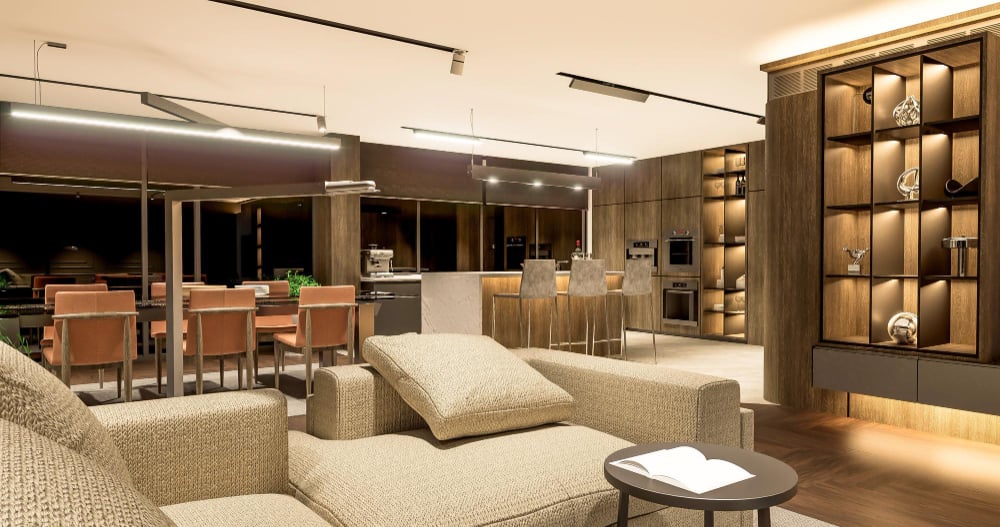
Before diving into décor, define your goals. Every good design, like every good story, needs intention. Are you creating two seating areas for conversation and solitude? A corner for focus and another for rest? Clarity gives direction. Once you understand the why, the how falls into place.
Because a room without purpose is like a scene without dialogue. It’s pretty, but pointless.
2. Use Visual Cues
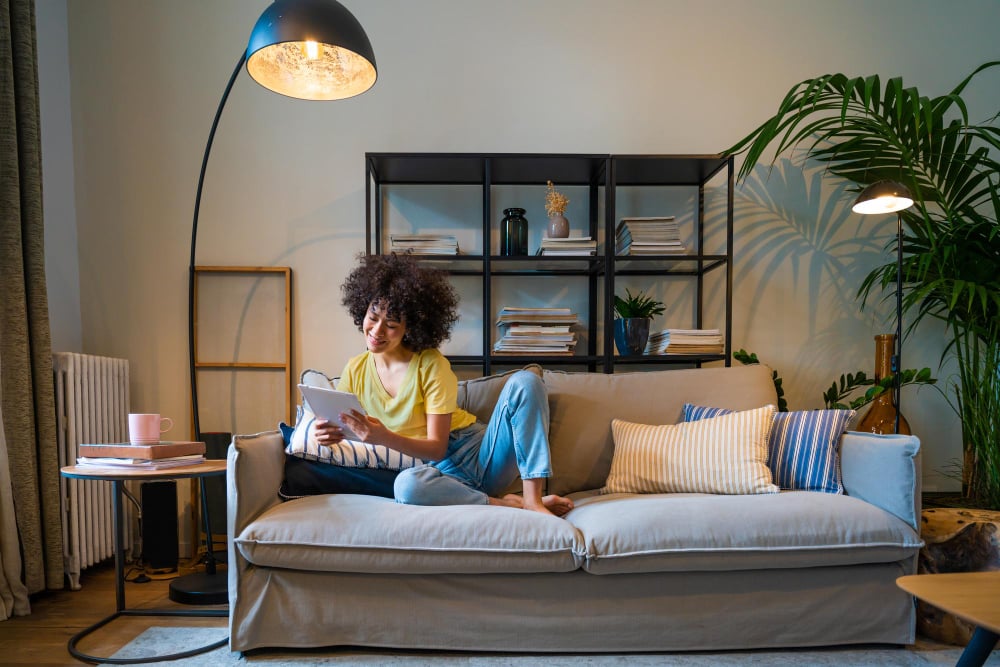
Use visual cues to define each zone. Add an accent chair, bookshelf, pendant light, or console to show a change in purpose. Let the eye move naturally across the room. Focus on scale, texture, and contrast.
Take inspiration from Kelly Wearstler’s juxtaposed design style. She mixes modern and vintage pieces, sharp lines and organic elements. The result feels bold yet balanced. It’s an easy way to divide a living room into two seating areas that look connected and full of character.
3. Tell Story
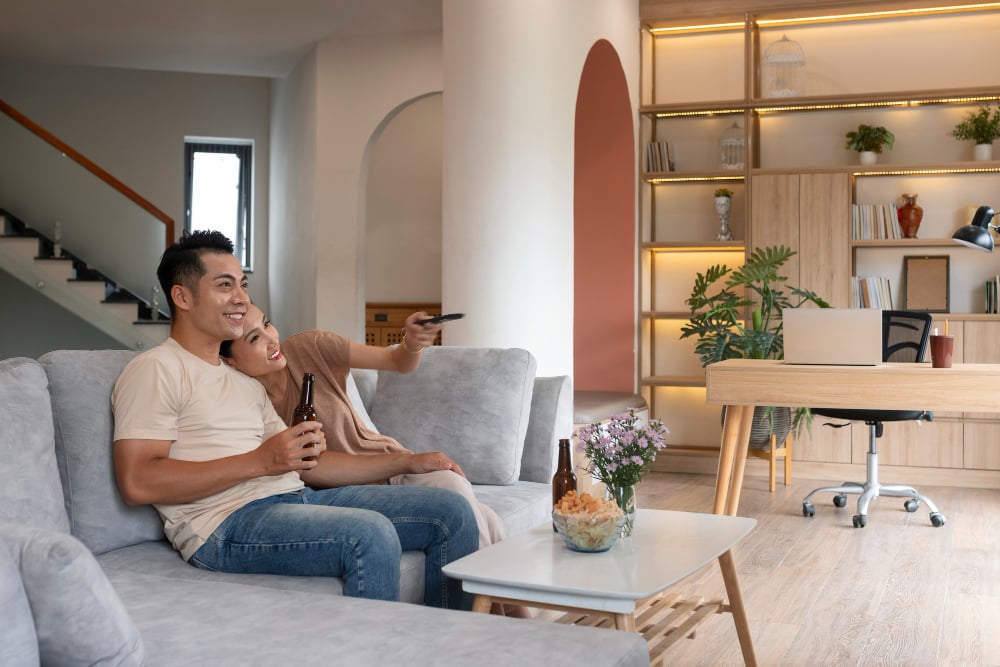
Walls divide. Furniture directs. Use furniture to shape your space instead of walls. Pull a sectional closer to the center, place a console table behind a sofa, or add a long bench to divide the room. Each piece helps guide the eye and define purpose.
Designer Nate Berkus often suggests creating more than one seating area in a room. This adds depth and keeps the layout feeling open. Try two sofas facing each other, a chaise near the window, and a console table as a soft divider between the two zones.
4. Light for Mood

Good lighting works like good cinematography in a film. Pendant lights and statement lamps set the stage, while a floor lamp by the window creates a calm mood. Warm light feels welcoming. Cool light feels fresh.
Layering your lights adds emotion and depth to the room.
- Ambient lighting gives overall brightness and sets the base. Examples: ceiling lights, chandeliers, or large pendants.
- Task lighting helps with focus and work. Examples: a desk lamp for reading or a light over the counter.
- Accent lighting highlights special details and adds drama. Examples: spotlights on art, a floor lamp near a sofa, or soft light on a fireplace.
5. Invisible Cut
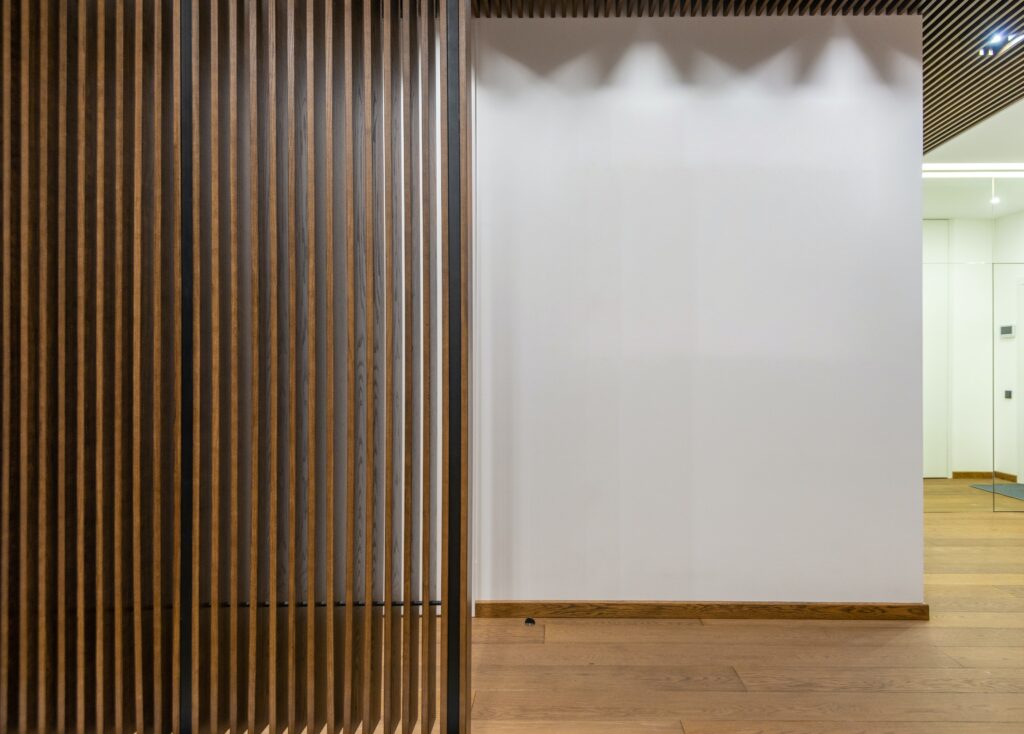
When done right, architectural dividers feel less like walls and more like smooth handoffs between spaces. A slatted wooden screen or a half-wall keeps the light moving and creates a clear boundary without closing things off.
It’s a classic move in modern design, striking the sweet spot between open and organized. As the saying goes, good design knows when to draw the line.
6. Mix Textures
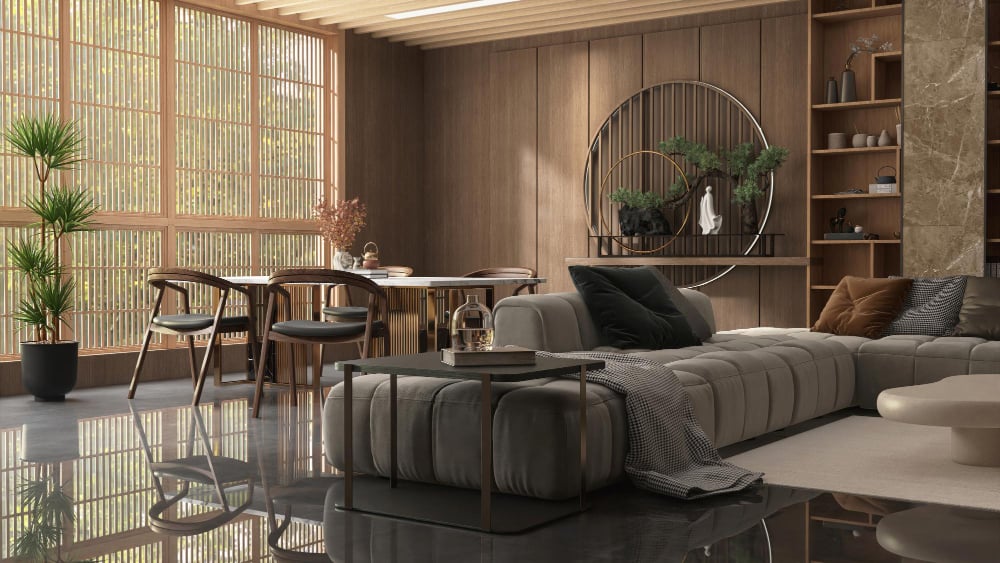
To divide a living room into two seating areas, focus on contrast, not clutter. Mix soft and rough materials. Try pairing bouclé with leather or wood with glass. Each texture adds a new layer, like blending songs on your Apple Music playlist until the mix feels just right.
Read more: What Is Bouclé Furniture and Why You MIGHT Need It?
A good room works the same way. Harmony doesn’t mean everything matches. It means each piece adds balance and rhythm to the space.
7. Paint With Emotion
When you plan how to divide a living room into two zones, color becomes your silent guide. Start with a consistent base palette, then add gentle shifts to define each area. For example, use warm earthy tones to create a space for conversation, while cool neutrals work well for calm and reflection.
According to research, color and texture can influence how people feel and interact within a space. This means the right color choices can make your living room both functional and emotionally balanced.
In addition, artwork can help define each zone. Hang one bold piece in each area to create a clear anchor and give the eye a natural place to rest before moving on.
8. The Showstopper

A sculpture can define a room without closing it off. Place one between two seating areas to create a soft divide. Pick a piece with shape and texture that catches the eye and adds balance.
Even a small stone or ceramic sculpture can make a space feel grounded. It works like a pause in the room, giving each side its own moment while keeping everything connected.
9. Plants Supporting Cast
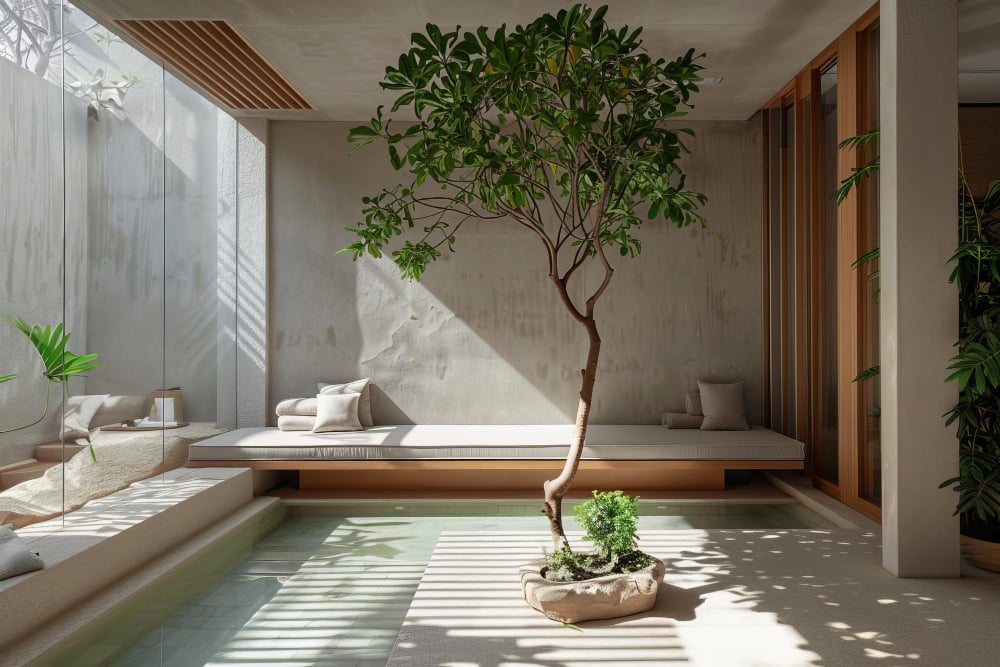
Use something alive to divide the space. For example, a tall fiddle-leaf fig, bonsai tree, or slender bamboo can serve as a soft, natural boundary. In addition, group plants of different heights to add depth and create a calm, layered look. Research also shows that indoor plants boost mental well-being, reduce stress, and make rooms feel more balanced.
10. Ceiling as Your Hidden Canvas

Most people stop decorating at eye level, but the ceiling can tell its own story. Use pendant lights, soft paint changes, or ceiling beams to define zones from above. Remember, the sky’s the limit when it comes to creativity. Even small, thoughtful changes can lift the room and transform how it feels.
Keep Things Easy
The best split living room ideas keep things open and easy. As a result, each area blends naturally into the next, like scenes that belong in the same movie. In addition, a touch of contrast makes the space lively, while balance keeps it comfortable and inviting.
Like every film needs a good ending, every room deserves a thoughtful finish. Do not think of it as dividing space but as refining it, keeping what matters and letting the rest go.
Explore Sohnne’s collection to find pieces that complete your story and bring your living space to life.





